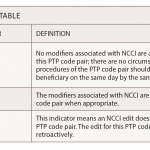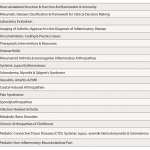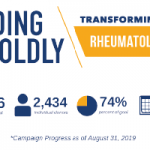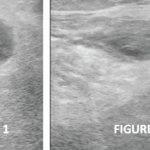New research finds patients previously treated with antibiotics, antifungals and antivirals may be more likely to develop rheumatoid arthritis than patients who have not received these treatments…


New research finds patients previously treated with antibiotics, antifungals and antivirals may be more likely to develop rheumatoid arthritis than patients who have not received these treatments…

Patients with meniscal tear experience similar levels of reduced pain and improved physical function when treated with either arthroscopic partial meniscectomy or physical therapy, according to a recent study. The study also found these improvements were long term—lasting through the five-year follow up…

Take the challenge. 1. A—Internet-only manuals Before appealing the request for an overpayment or appealing a denial, providers and staff should first verify the claim was coded and billed correctly. Second, staff should review the internet-only manuals website, which includes operating instructions, policies and procedures that cover CMS policies based on statutes, regulations, guidelines, models…
A practice receives an overpayment request from the Centers for Medicare & Medicaid Services (CMS) for not meeting medical necessity related to a biologic infusion. In which instructional guideline can the coding and billing staff find the necessary information on the CMS website to handle this request? Internet-only manuals National Correct Coding Initiative Medically Unlikely…
Insurance overpayments can occur in a practice for a variety of reasons. An insurer may simply make a mistake by paying a provider more than the contracted amount for a service or pay for a service that is not covered under the patient’s insurance plan. Whatever the reason, overpayments can and will create headaches for…

Benjamin J. Smith, PA-C, DFAAPA, Sonam Kiwalkar, MD, & Aileen Ledingham, PT, PhD, on behalf of the ARP eLearning subcommittee |
The Advanced Rheumatology Course (ARC) carries the distinction of being the first online educational product of the ACR/ARP. In the early 2000s, members of the College thoughtfully considered action needed to efficiently prepare health professionals looking to enter the rheumatology workforce. A decision was made to create online educational products with the specific target audience…

In 2018, the Rheumatology Research Foundation embarked on its third and most ambitious fundraising campaign, Leading Boldly: Transforming Rheumatology, with a goal of raising $75 million over five years. The campaign supports Foundation programs to recruit the best and brightest into the field, train rheumatology professionals at all career stages and support investigators conducting research…

Excluding the years he spent in medical school, Jonathan Paramo, MD, has always kept birds as pets. As an animal lover, he believes he shares a special chemistry with birds, specifically any species of parrots. When he’s around them, he says he experiences “a special feeling.” “There are cat lovers and dog lovers, but you…

Recognizing that situations involving ties with the pharmaceutical industry and conflicts of interest are often not black and white, the ACR’s Committee on Ethics and Conflict of Interest has collected feedback on four ethically challenging scenarios to gauge how rheumatology providers think about them. The survey generated responses that were often mixed, showing that when…

Mark H. Greenberg, MD, RMSK, RhMSUS, Prem Patel, Elijah Mitcham, MD, James W. Fant Jr., MD, & Frank R. Voss, MD |
A 56-year-old automobile mechanic was referred to our rheumatology service by his orthopedist to evaluate left posterior knee pain and swelling that had been present for three months. The patient had undergone bilateral total knee arthroplasties (TKAs) for sports-related osteoarthritis three years before. In addition to the knee pain, the patient described several years of…